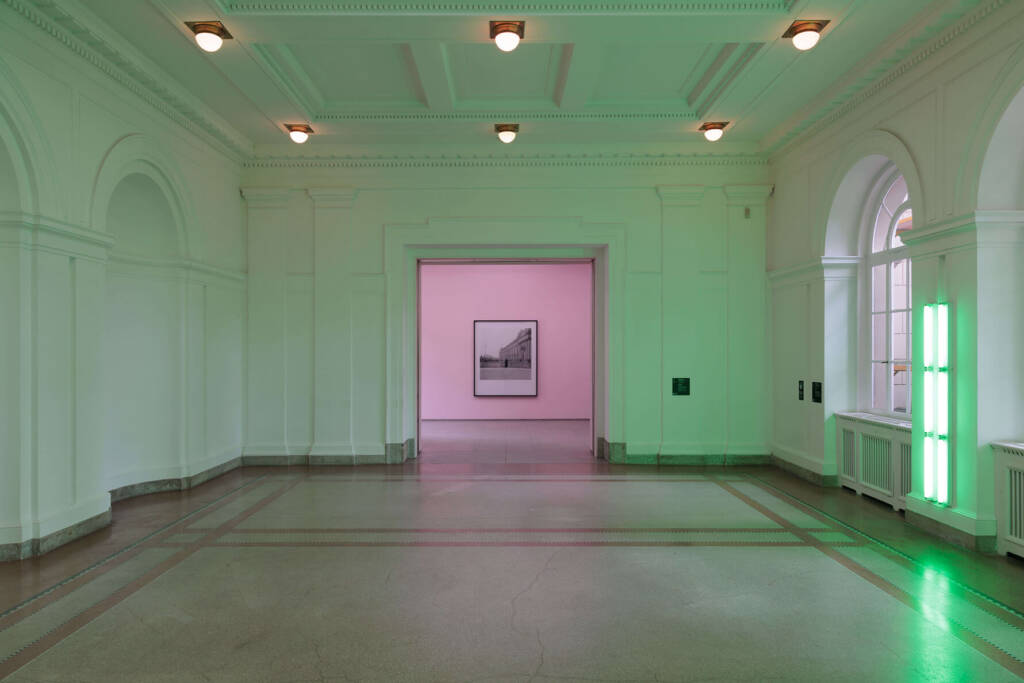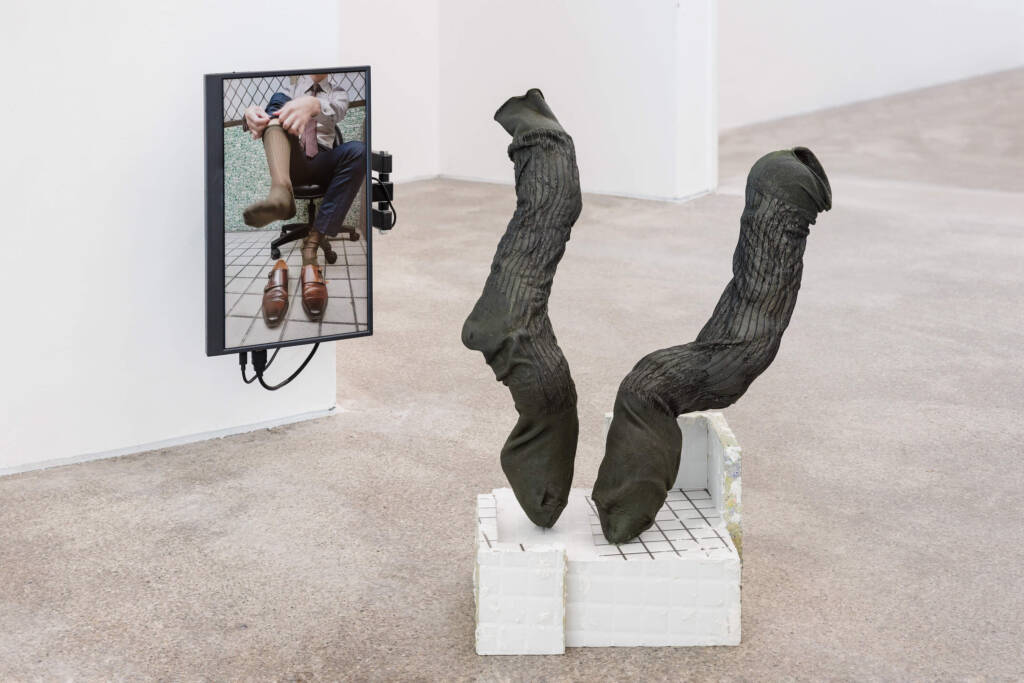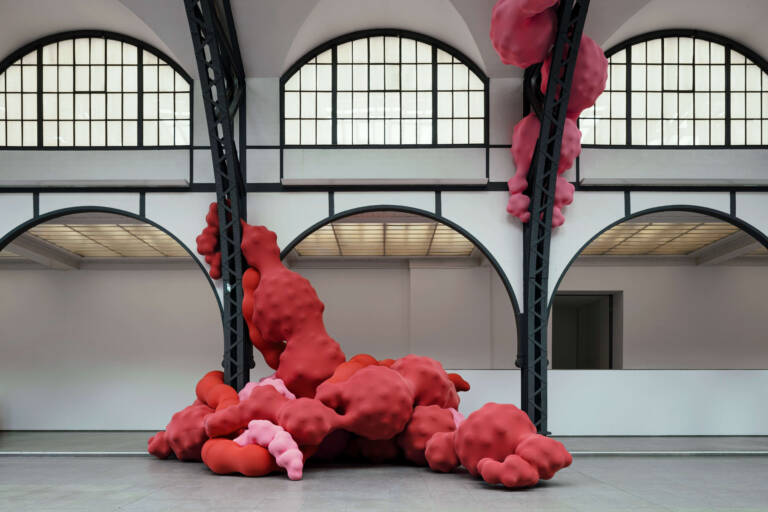
Photography by JACOPO LA FORGIA
Courtesy of STAATLICHE MUSEEN ZU BERLIN, NATIONALGALERIE

Photography by JACOPO LA FORGIA
Courtesy of STAATLICHE MUSEEN ZU BERLIN, NATIONALGALERIE

Photography by JACOPO LA FORGIA
Courtesy of STAATLICHE MUSEEN ZU BERLIN, NATIONALGALERIE

salaryman no.2, 2024, Suit socks bought from Taiwanese foot fetish online marketplace, wood, rubber, paper, celluclay, 37 x 23.5 x 52 cm, video monitor, 22.5 x 36 cm, 1’21”
Courtesy of NI HAO and COMMUNE GALLERY, Vienna. Photography by MANUEL
CARREON LOPEZ
Sam Bardaouil is a Lebanese-born curator, scholar, and writer who challenges established art histories, reinterpreting them with a critical perspective. Holding an MFA in Advanced Theatre Practice and a PhD in Art History, he co-founded artReoriented in 2009 with Till Fellrath. In 2022, the duo assumed the directorship of Berlin’s Hamburger Bahnhof – National Gallery of Contemporary Art, where Bardaouil envisions the museum as “a stage, a refuge, a battleground.”
Through his curatorial practice, Bardaouil creates projects that unsettle inherited canons and shape the ways collective memory is constructed and experienced. Together with Fellrath, he has organized major international exhibitions, including the 16th Lyon Biennale, Manifesto of Fragility, and the French Pavilion at the Venice Biennale. This year, the duo co-curates the Taipei Biennial, Whispers on the Horizon (November 1, 2025–March 29, 2026), which explores longing and fragility across generations and histories. In this conversation with hube’s editor-in-chief, Bardaouil reflects on the museum as a living, breathing space where freedom, memory, and collective responsibility intersect.
Sasha Kovaleva: Contemporary museums are becoming multidisciplinary spaces. Music, poetry, theatrical practices are infiltrating them. Is the museum now more than just a museum?
Sam Bardaouil: For me, the museum has always been more than a museum. It’s a stage, a classroom, a gathering place, a refuge, a battleground. At Hamburger Bahnhof, we invite music, poetry, performance into the space, not to decorate it but to test it—to see how far the walls can stretch. A museum today is not a building to be filled; it’s a living organism, breathing with the multiplicity of forms that culture takes.
SK: Is the constant rethinking of aesthetic, historical, and ethical heritage an inevitable necessity for society?
SB: It is not only inevitable, it is survival. Heritage is not a marble monument; it’s clay, constantly reshaped by our hands. To leave it untouched is to risk irrelevance. The rethinking is painful, because it forces us to confront our blind spots, our exclusions. But without it, society calcifies.
SK: The term “moral landscape” is often used to describe the relationship between individuals and society. What is the role of the curators in shaping this landscape?
SB: We are cartographers of ambiguity. We don’t dictate morality, but we map the questions, the contradictions, the dissonances. Curators hold open a space where people can confront their own role in the moral landscape. In that sense, our job is less about pointing to answers and more about refusing easy absolution.
SK: Freedom is one of the key concepts in the artistic process. Even if freedom can only be understood through limitations. How can a museum define its own freedom in its interaction with the work of artists?
SB: The museum’s freedom lies in restraint. To resist instrumentalizing artists, to allow their voices to exist in all their contradictions, even when they unsettle us. Freedom is not the absence of boundaries but the courage to redraw them together.

